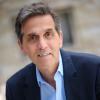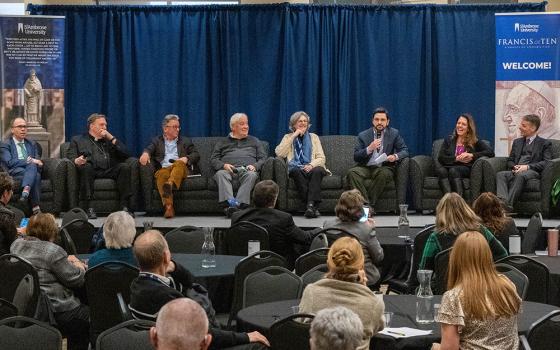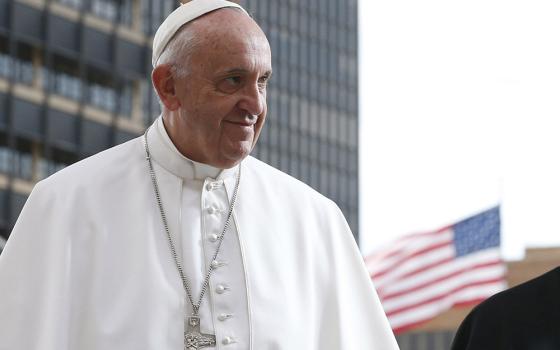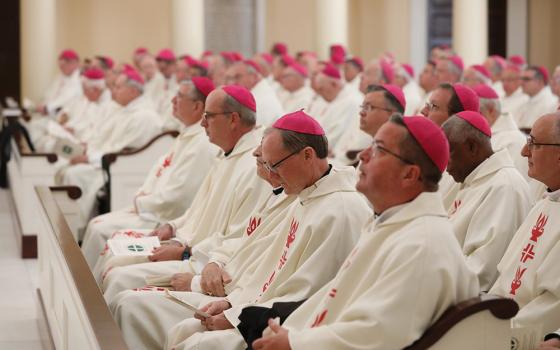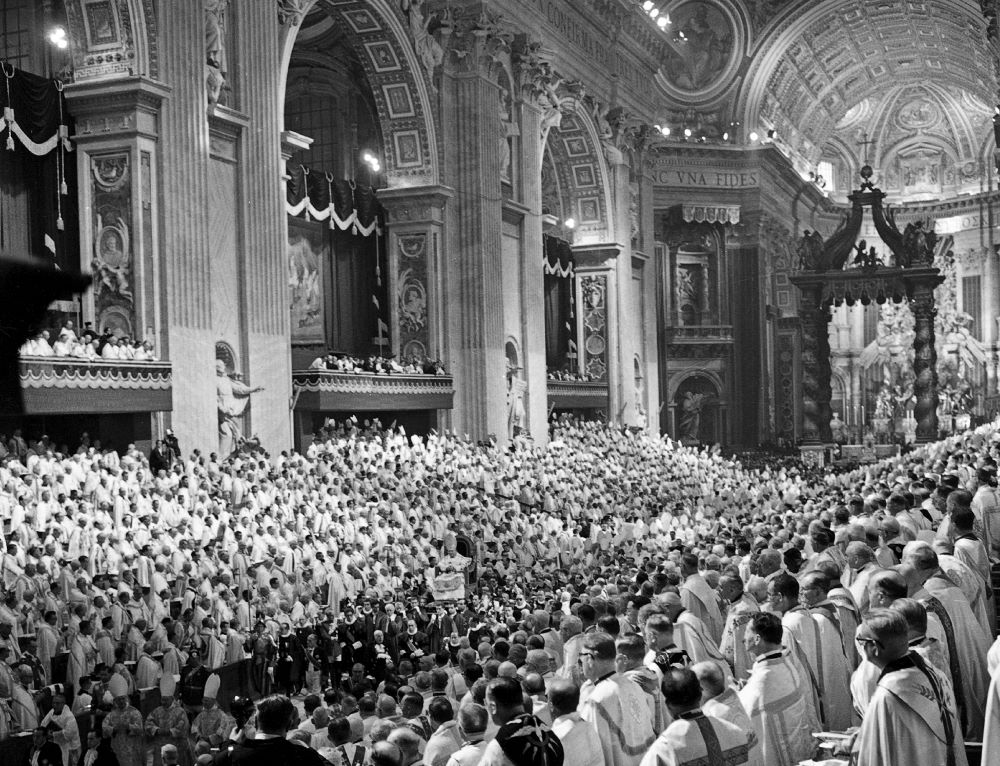
Pope John XXIII leads the opening session of the Second Vatican Council in St. Peter's Basilica Oct. 11, 1962. (CNS/L'Osservatore Romano)
The phrase "the spirit of Vatican II" gets tossed around a lot lately, especially by people with clear political agendas.

It's become a cudgel for both the left and right, tangled up in the culture wars consuming America. That spirit either signals pent-up hopes for the church's future or utter despair —depending on which side of the aisle you stand.
What "the spirit of Vatican II" means for Catholics today may come into focus over the next few weeks. NCR will mark 10 years with Pope Francis and his leadership through reports, essays, commentary, events — even a certain comic strip. We'll examine the decade past and the years to come for Francis, a pope who seems to redefine for a new generation a special spirit born three generations ago.
Two commemorative plates in the china cabinet of my childhood home highlight that optimism.
Nearly every family in my very Catholic neighborhood had them: plates with images of President John F. Kennedy and Pope John XXIII. They stood in cabinets and hung on walls years after both men had passed away because, it seems to me, those plates honored more than two lives. They honored a set of aspirations and expectations.
In the 1960s, most Catholics in my Bronx parish were moving up. They stepped away from the world of first-generation immigrants who looked to the church for security and into the new world of the next generation, eager to prove themselves completely American. Kennedy was that aspiration: Wealthy and glamorous, the nation's first Catholic president seemed at home on the world stage, a symbol of the era's democratic spirit. To many, his election felt as if the most powerful nation had finally accepted Catholics as full participants in the American dream.
Advertisement
Pope John XXIII raised expectations that their church would follow suit. Vatican II could in some ways be seen as a response to Americans and their president, a declaration that the church could open its doors, let in fresh ideas and step out into a changing world. Vatican II emphasized the role of the laity and individual consciences — notions that might have sounded strange to some parts of the Catholic world but struck a very American chord.
Like John XXIII, Francis seems to understand the church is once again at a hinge point in its long history. It faces a similar choice: Does it open the doors again, or — in the face of scandal, controversy and declining attendance — lock them even tighter?
Francis confronts this moment using some of the same tools as John XXIII. His synodality initiative is like John's efforts to elevate the laity, compelling leadership to listen to the people in the pews. And, like John, Francis often uses Catholic social justice to reach across generations and cultures. In the '60s, engaged Catholics were at the vanguard of movements for peace, civil rights and workers' rights.
To find out what Vatican II’s social justice spirit might look like today, consider the pope's recent travel schedule. Republic of Congo and South Sudan are poor, strife-torn countries where the people and their natural resources are exploited by the rich and powerful. His sermons and speeches there were full-throated expressions of Catholic social justice teaching. Speaking at the presidential palace in the Republic of Congo, Francis condemned "those who would foment violence in the country and exploit it in order to make shameful business deals."
We don't hear that kind of dynamic expression of Catholicism from certain American bishops, the ones who seem eager for Francis to leave the theater, those who dismiss efforts like synodality.
Some have made it quite clear that listening to others is not in their job description.
But listening was part of John XXIII's appeal in my neighborhood. He seemed like an ideal pastor, the kind my grandparents likely never grew up with. Back in the poor towns of Southern Italy, people were used to arrogant priests who looked down on them because they worked the land and never received an education. But once in America, their sons and daughters expected something very different: someone who met them at eye-level, who listened and understood their lives.
That was John XXIII and that's Francis as well. All those people who, like my parents, displayed those china plates for years and years — they knew intuitively what "the spirit of Vatican II" meant for them.
Over the next few weeks, as NCR looks at the papacy of Francis and his path ahead, we hope to capture for our readers what that spirit — removed from politics and posturing — means now.
The search for this elusive and evolving spirit keeps NCR vibrant, relevant and maybe even essential to all of us here, and — we hope — to readers like you. Thank you for that and for everything you do to support us.
